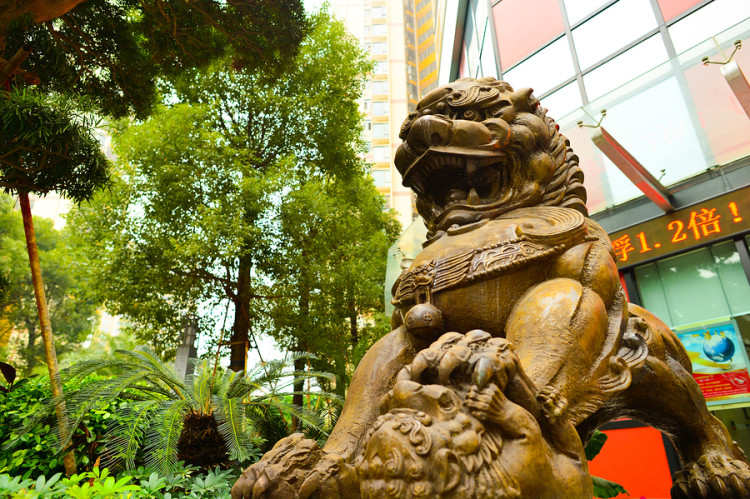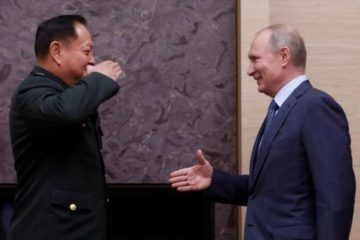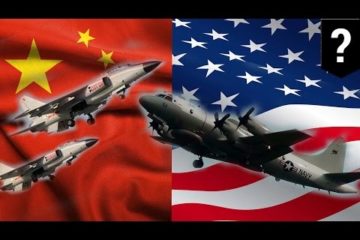Rocks, Reefs and Recriminations: a South China Sea Glossary

(Bloomberg) —An international Court issues its ruling Tuesday on a challenge brought by the Philippines to China’s claim to more than 80 percent of the South China Sea.
The report by the tribunal in The Hague—which will decide on at least seven of 15 Philippine submissions—is likely to be filled with jargon related to maritime disputes. To help you prepare, here is a glossary of the key terms and acronyms:
ASEAN
The 10-member Association of Southeast Asian Nations ranges from small states like Laos to bigger economies like Indonesia. China and Asean have agreed to develop a code of conduct for the South China Sea, but progress has been minimal. Asean operates by consensus, and China has lobbied countries under its influence to block communiques that may criticize its behavior, according to diplomats.
EEZ
States may claim an “exclusive economic zone” of up to 200 nautical miles (370 kilometers) around their territory, where they have the sole right to exploit resources. They must allow the innocent passage of foreign vessels through these zones, according to the United Nations Convention on the Law of the Sea. China and countries including India argue they have the right to regulate foreign military activity within an EEZ.
FONOP
The U.S. conducts so-called freedom of navigation operations to demonstrate its right to fly and sail through what it considers international waters and airspace. It has performed three transits by warships within the 12-nautical mile territorial sea area near China’s claimed features since October, plus a number of flyovers.
Q&A: South China Sea
Innocent passage
UNCLOS provides for the passage of foreign vessels—military or commercial—through an EEZ or 12-nautical mile territorial sea. If a ship engages in activity that threatens the security of the coastal state, the passage is no longer considered innocent. All three of the U.S. FONOPS have been innocent passages. Some U.S. defense analysts argue that by not engaging in other activities, the U.S. warships gave credibility to the zones around the reefs China claims.
Island
A naturally formed land mass that’s above water at high tide and can sustain human habitation. An island generates a territorial sea and an EEZ.
Itu Aba
The largest natural feature in the Spratlys and occupied by Taiwan. Taipei is worried the tribunal might rule on whether Itu Aba—also known as Taiping—is an island, even though it’s not named in the Philippine submissions. Taiwan and China’s claim to the South China Sea are based on the same map published before the Nationalist government fled to Taipei and the Communists won China’s civil war.
Low-tide elevation
A feature exposed at low tide but submerged at high tide. It doesn’t generate a territorial sea.
http://www.bloomberg.com/graphics/2015-south-china-sea/
Nine-dash line
China’s claim is based a dashed line drawn on a 1940s map, although more recent maps include 10 dashes. The line is shaped like a cow’s tongue and loops to a point about 1,800 kilometers south of the coast of China’s southern Hainan Island. Beijing has never clarified whether it claims all the sea or just the land features within it.
Observers
Countries allowed to send representatives to the tribunal’s closed-door hearings on the case, including Australia, Indonesia, Japan, Malaysia, Singapore and Vietnam. A U.S. application to attend was rejected as it hasn’t signed UNCLOS.
PCA
The Permanent Court of Arbitration in The Hague has been appointed arbitrator in the case under the provisions of UNCLOS. Its ruling is final and can’t be appealed, but there’s no mechanism to enforce it.
Rock
A feature that’s above water at high tide but can’t sustain human habitation or economic life. Rocks generate 12-nautical mile territorial seas, but not EEZs.
Spratly Islands
More than 100 small islands and reefs set in rich fishing grounds and potentially sitting on oil-and-gas deposits. The chain, known as the Nanshan Islands to China, is claimed in entirety by China, Taiwan and Vietnam. The Philippines claims part of them, as does Malaysia.
China occupies eight features, including Fiery Cross Reef, Mischief Reef, South Johnson Reef and Subi Reef. It’s turned seven into artificial islands. Fiery Cross is equipped with a 3 kilometer airstrip capable of landing military aircraft. Airstrips are being built on Subi and Mischief. Vietnam occupies 21 features in the Spratlys, nine of them above water at high tide and 12 low-tide elevations. The Philippines occupies eight features. The largest, Thitu, has a 1 kilometer airstrip. Malaysia occupies seven features and runs a naval base on Swallow Reef. Taiwan occupies Itu Aba and one smaller feature. Brunei claims an EEZ that takes in a southern reef, but hasn’t made any formal claim to it.
Scarborough Shoal
China seized the shoal from the Philippines in 2012. Its coast guard periodically shoos off Philippine fishing boats nearby. Should China build on the shoal, it could gain a potential military outpost right on the Philippines’ door.
Territorial sea
The 12-nautical mile territorial belt measured from the baseline of a coastal state. The baseline refers to the low water mark of the coast.
UNCLOS
The treaty that has since 1994 defined the rights and responsibilities of nations with respect to the world’s oceans. In particular, it defines the territorial zones generated by maritime features. China and the Philippines have signed and ratified it. The U.S. says it follows its provisions.
Sources: IISS, Asia Maritime Transparency Initiative, UNCLOS, PCA, CIA







No Comment